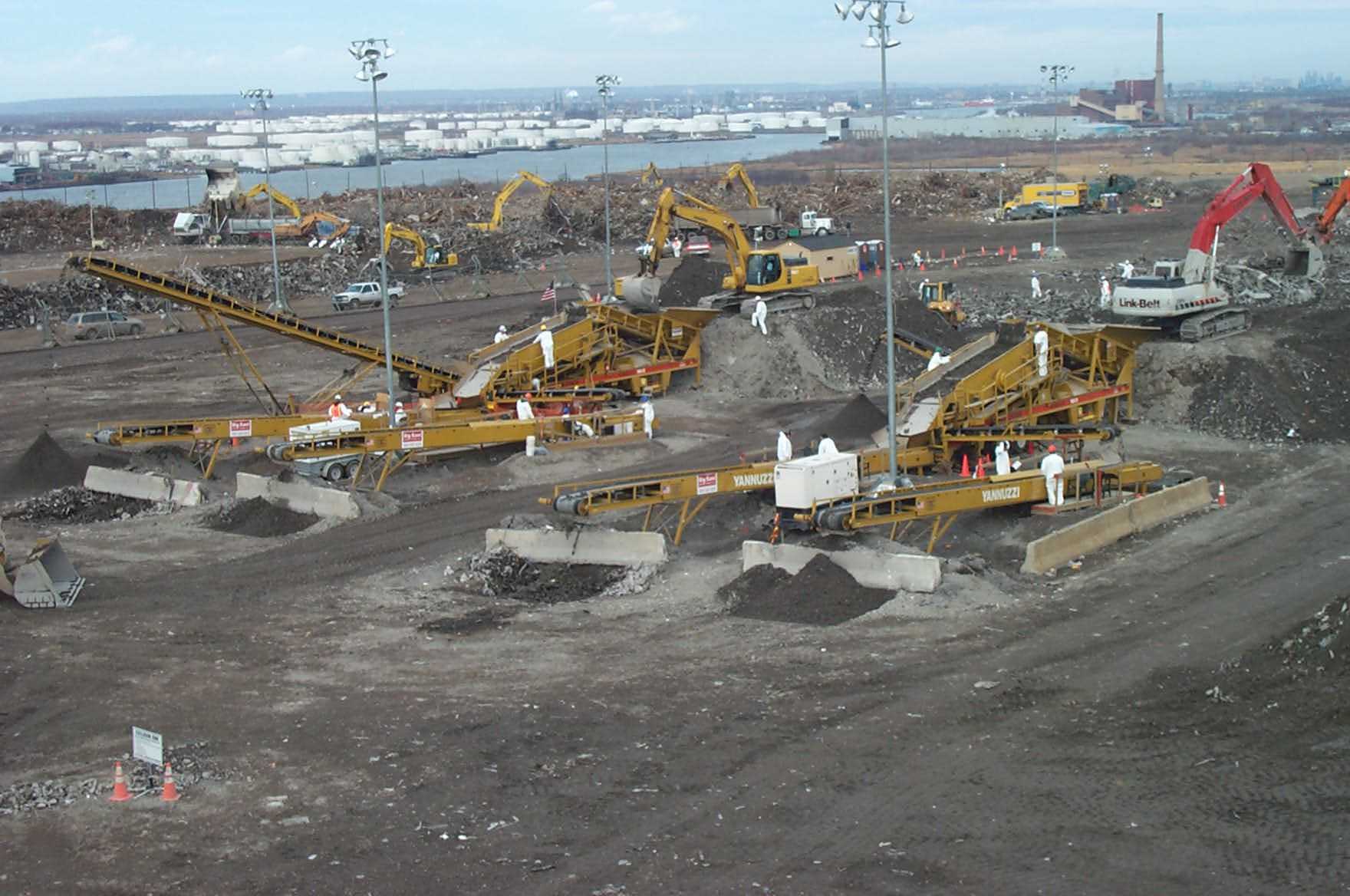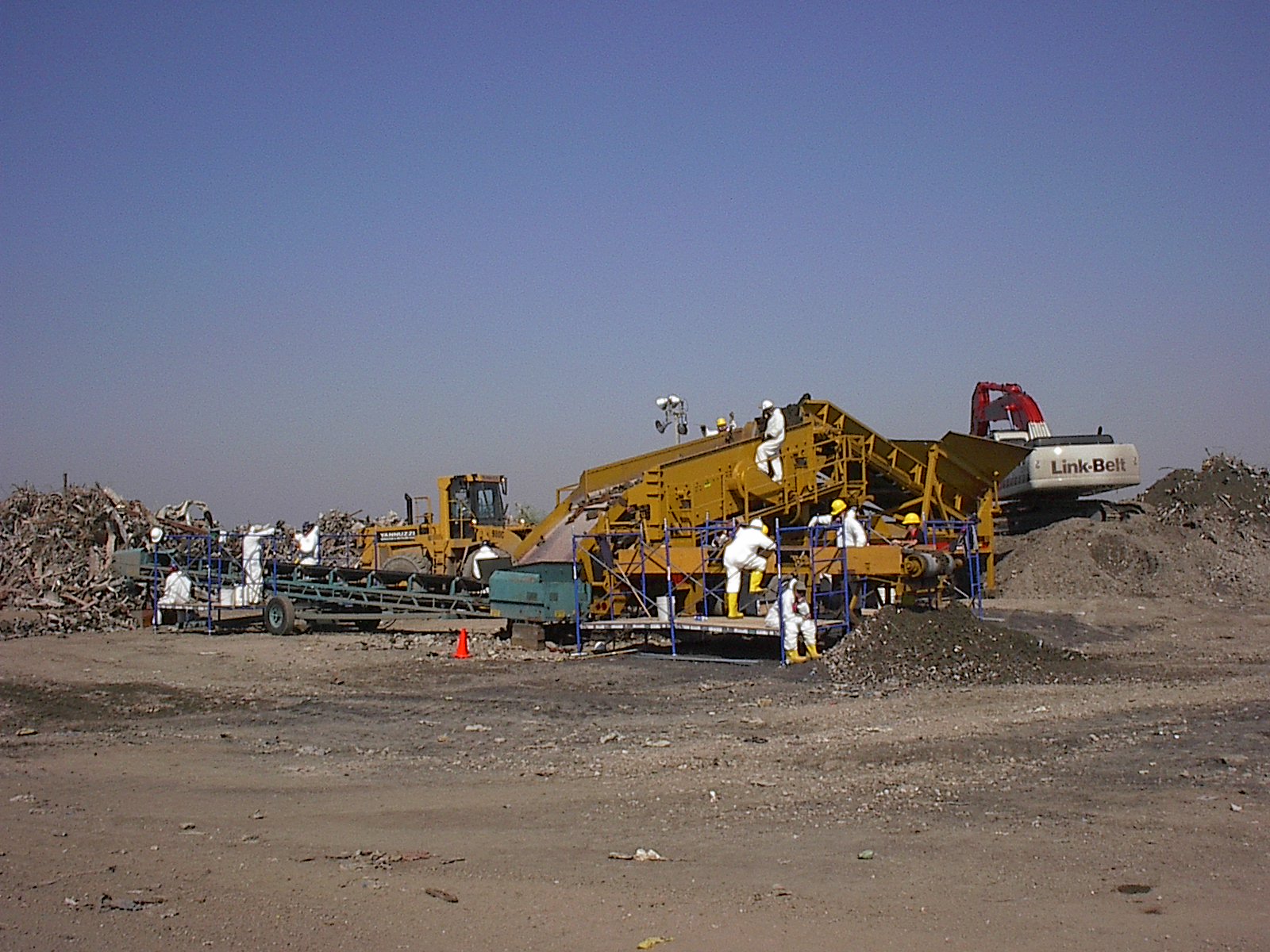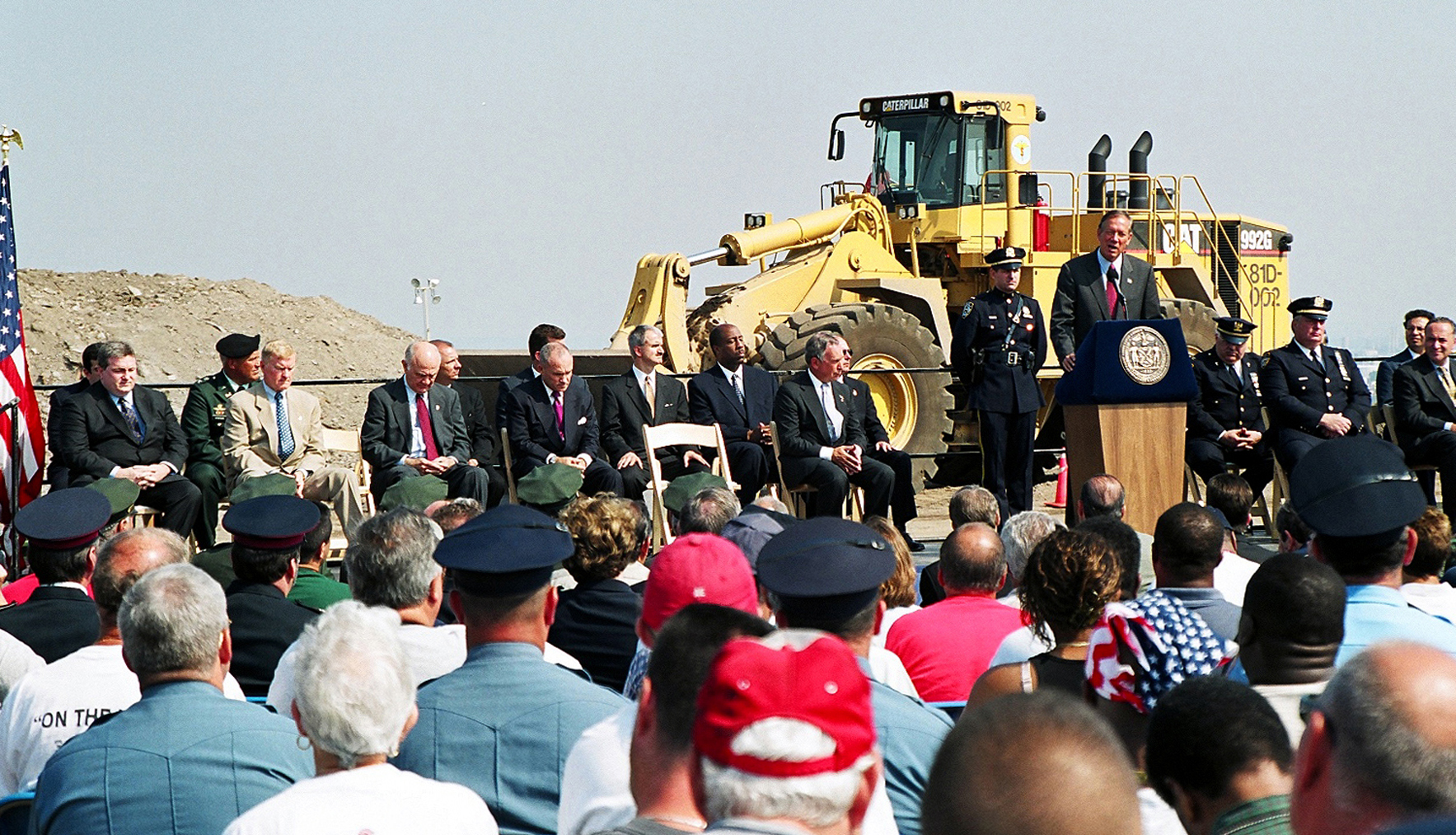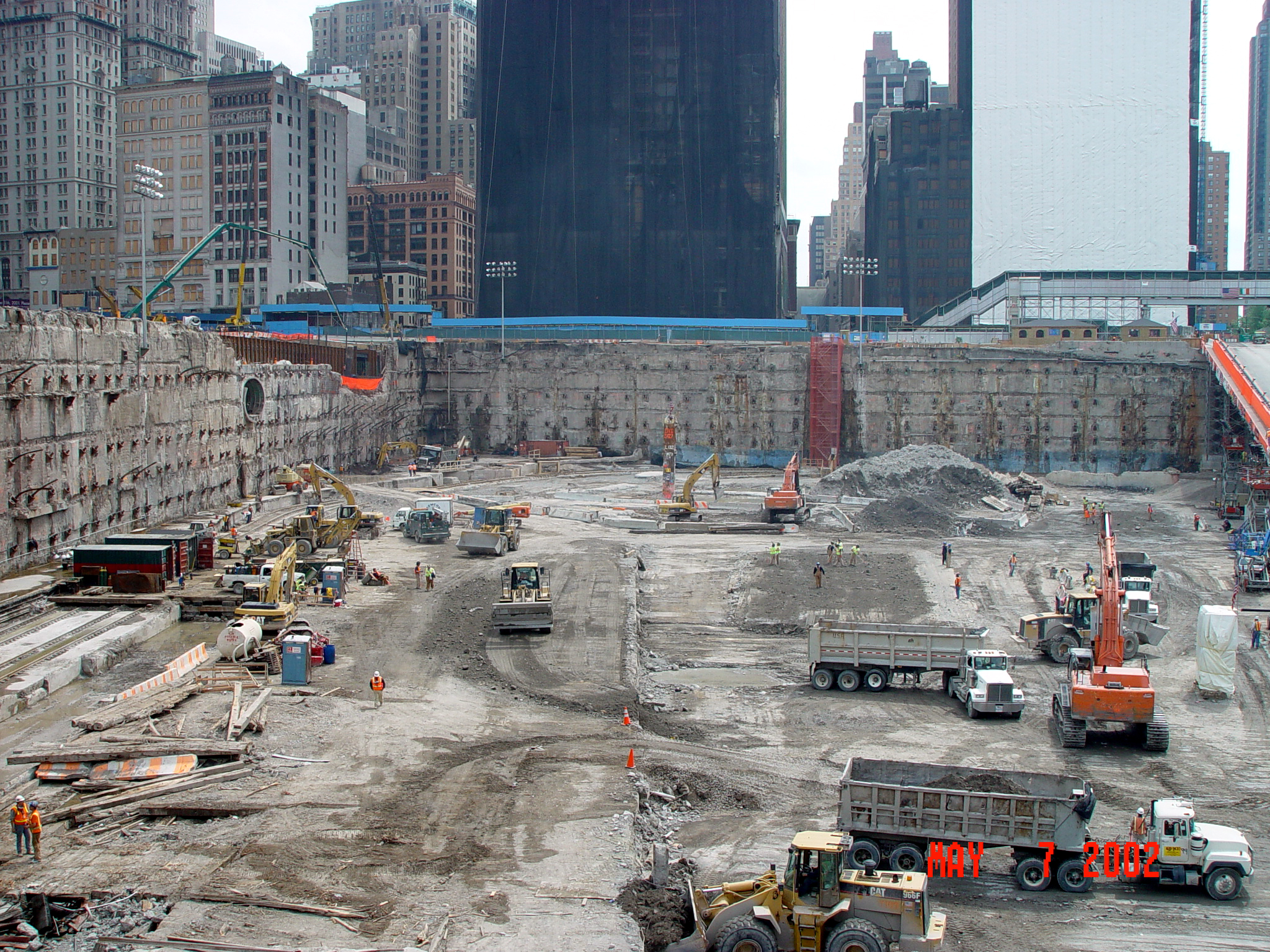V. The Debris Mission at the Landfill
| |
 |
| |
New York City Fire Department emergency vehicles that were destroyed by the collapse of the World Trade Center towers were removed to the Staten Island landfill for examination and decontamination. Those not selected for preservation in museums were recycled.
Office of History |
When terrorists crashed hijacked airliners into the two World Trade Center (WTC) towers on September 11, 2001, the U.S. Army Corps of Engineers (USACE) mobilized Planning and Response Teams and subject matter experts from across the country and sent them to New York City. At the Federal Emergency Management Agency’s (FEMA) request, USACE initially provided structural engineering expertise to assist search-and-rescue and recovery activity at the World Trade Center. Although FEMA often tasks USACE to provide debris management and removal, the City of New York elected to remove the rubble from the WTC site itself. The city trucked the debris from the disaster site, designated Ground Zero, to docks at the southern tip of Manhattan. From there the city used Department of Sanitation barges to transport the debris to the recently closed Fresh Kills Landfill in the borough of Staten Island. There the debris could be carefully examined for victims, personal effects, and evidence related to the attack. To facilitate the movement of the debris, USACE issued emergency dredging permits to enable the barges to dock in Manhattan.
Perhaps unique among American cities, New York had the capability to respond and recover from the World Trade Center attacks. But after managing site clearance operations at Ground Zero and debris inspection and management at the Staten Island landfill for three weeks, the city, through FEMA, asked USACE to manage activities at Fresh Kills so it could concentrate on operations in Lower Manhattan. Fortuitously, USACE already had a contract in place for debris management services through its Advance Contract Initiative, so the Corps and its contractor, Phillips and Jordan, were able to begin work immediately.
USACE’s first task was to design an efficient processing system to handle the thousands of tons of debris that arrived at the landfill each day for processing. After debris arrived at Fresh Kills, technicians mechanically separated the material based on its composition. Heavy equipment operators set aside the large pieces of structural steel that arrived at the landfill, and they sorted smaller metal pieces by size, all in preparation for examination by city and federal authorities. After inspection, metal went to an offsite recycling contractor. The non-metal debris underwent a similar process. Screens separated the material into three sizes—smaller than a quarter inch, between a quarter inch and 2 inches, and from 2 inches to 8 inches—after which conveyors sent it to law enforcement personnel for inspection. Afterward, workers placed the cleared material in the landfill.
 |
|
 |
|
Debris from the World Trade Center was transported by barge via the water visible in the distance. Some of the steel and larger items inspected separately are visible in the background, with the inspection process of the smallest-sized material in the foreground. Office of History.
|
|
Workers are operating one of the individual debris sorting stations at the Staten Island landfill. Here larger pieces have been screened out by the machine at the right and examined by law enforcement officers astride the conveyor belt. A second conveyor takes the debris away to be collected and disposed of following examination. Office of History. |
 |
|
New York Governor George Pataki at the podium with officials on the dais
at the Staten Island landfill closing ceremony. Photo by Peter Shugert.
|
To protect everyone working at the Staten Island landfill, USACE and its partners established a health and safety plan. It developed personal protective equipment requirements based on the location and type of work, and it included programs to monitor and maintain air quality and control dust. Larger items taken to the landfill for processing, such as vehicles and structural steel, required decontamination, and USACE procedures ensured it was done safely. Corps guidelines guaranteed that hazardous material culled from the debris stream was disposed of properly. A USACE traffic plan managed the vehicles and heavy equipment at the site to prevent accidents. Initially operations at the Staten Island landfill ran 24 hours a day, so USACE had lights installed to allow work at night. As the debris processing operation grew, the Corps also began adding support facilities —dining halls, wash and shower stations, and temporary buildings to house the evidence, human remains, and personal property discovered during the inspection process. As the winter of 2001 approached, the Corps built climate- controlled glass “greenhouses” around the inspection areas to protect workers and law enforcement personnel from the elements.
When operations at the Staten Island landfill ended on July 15, 2002, USACE and its contractors had processed more than 1.2 million tons of debris from the World Trade Center. The debris management project was unique in USACE history because of its size, location, complexity, number of agencies and organizations involved, and most importantly, its emotional sensitivity. It took place in the location directly affected by the disaster and was managed by Corps staff who lived there. The site was an active crime scene that required careful investigation and handling because the debris included human remains, evidence, and personal property of the victims. While proud of the Corps’ role in New York City following the 9/11 attack, many USACE employees said that managing the Staten Island landfill debris project was far and away the largest and most satisfying element of the overall operation.
 |
The World Trade Center site in May 2002, completely cleared of debris,
shortly before the closure of the Staten Island landfill project. Office of History. |
September 2021. No. 148.
Office of History's series of articles remembering the responses to the attacks of September 11, 2001